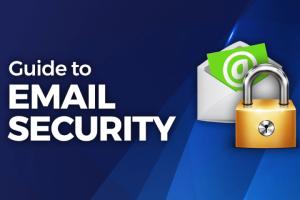Ultimate Guide to Safeguarding Your Email Account from Hackers

-
Quick Links:
- Introduction
- Understanding Email Hacking
- Common Hacking Techniques
- The Importance of Email Security
- Step-by-Step Guide to Securing Your Email Account
- Additional Security Measures
- Case Studies and Expert Insights
- Conclusion
- FAQs
Introduction
Email accounts have become central to our digital lives. From personal communications to sensitive financial transactions, the data within our inboxes is valuable. However, with the rise of cybercrime, safeguarding our email accounts has never been more critical. This guide will provide you with the tools and knowledge necessary to protect your email account from hackers effectively.
Understanding Email Hacking
Email hacking refers to unauthorized access to an email account, allowing hackers to read, send, or delete messages. This intrusion can lead to identity theft, financial loss, and significant privacy breaches.
The Risks of Email Hacking
- Identity theft: Hackers may impersonate you to steal money or commit fraud.
- Data loss: Important emails and documents can be deleted or altered.
- Spam and phishing: Hackers may use your account to send spam to your contacts.
Common Hacking Techniques
Understanding how hackers gain access to email accounts is crucial for implementing effective security measures. Here are some common techniques:
Password Cracking
Many hackers use automated tools to guess passwords through brute force attacks or dictionary attacks.
Phishing Attacks
Phishing involves tricking users into providing their login credentials through fake emails that appear legitimate.
Malware
Malicious software can be used to capture keystrokes or gain unauthorized access to your system.
The Importance of Email Security
With the sensitive nature of the information exchanged via email, ensuring the security of your email account is paramount. Breaches can lead to serious consequences, not only for individuals but also for businesses.
Step-by-Step Guide to Securing Your Email Account
Follow these steps to enhance your email security:
1. Use Strong Passwords
Choose a password that is at least 12 characters long, includes a mix of letters, numbers, and special symbols. Avoid using easily guessable information such as birthdays or names.
2. Enable Two-Factor Authentication (2FA)
2FA adds an extra layer of security by requiring a second form of verification, such as a text message or authentication app code, in addition to your password.
3. Regularly Update Your Password
Change your password every few months to minimize the risk of unauthorized access.
4. Be Wary of Phishing Attempts
Always verify the sender’s email address and avoid clicking on links or downloading attachments from unknown sources.
5. Keep Your Software Updated
Regularly update your operating system, web browser, and email client to protect against security vulnerabilities.
6. Use a Reputable Antivirus Program
Invest in a reliable antivirus software that can detect and prevent malware attacks.
Additional Security Measures
In addition to the basic protection strategies, consider the following:
1. Secure Your Devices
Ensure that all devices used to access your email are secure, using firewalls and encryption where possible.
2. Monitor Account Activity
Regularly check your account activity for any suspicious logins or changes.
3. Educate Yourself and Others
Stay informed about the latest email security threats and educate your contacts to help prevent phishing attacks.
Case Studies and Expert Insights
Real-world examples illustrate the importance of email security. For instance, in 2020, a high-profile email breach affecting thousands of individuals was traced back to weak password practices. Experts emphasize that adopting strong security measures can significantly reduce the risk of such breaches.
Conclusion
Protecting your email account from hackers requires vigilance and proactive measures. By following the steps outlined in this guide, you can enhance your email security and safeguard your personal information from cybercriminals.
FAQs
1. What are the signs that my email account has been hacked?
Signs include unusual login activity, emails sent from your account that you didn't send, and password reset notifications you didn't initiate.
2. Can I recover a hacked email account?
Yes, most email providers have recovery options. You may need to answer security questions or verify your identity through recovery emails or phone numbers.
3. How often should I change my email password?
It's recommended to change your password every 3 to 6 months, or immediately if you suspect it has been compromised.
4. Is two-factor authentication necessary?
Yes, it significantly enhances your account's security by requiring a second form of verification beyond just your password.
5. What should I do if I receive a suspicious email?
Do not click on links or download attachments. Report the email as phishing and delete it.
6. Can public Wi-Fi affect my email security?
Yes, using public Wi-Fi can expose your data to hackers. Avoid accessing sensitive accounts on public networks or use a VPN.
7. How can I tell if a website is secure?
Look for "https://" in the URL and a padlock icon in the address bar, indicating a secure connection.
8. Should I use the same password for multiple accounts?
No, using the same password increases the risk of multiple accounts being compromised if one is hacked.
9. What are the best practices for creating strong passwords?
Use a combination of uppercase and lowercase letters, numbers, and symbols. Avoid common words and phrases.
10. How can I educate others about email security?
Share articles, tips, and resources on email security, and encourage discussions about safe online practices.
Random Reads